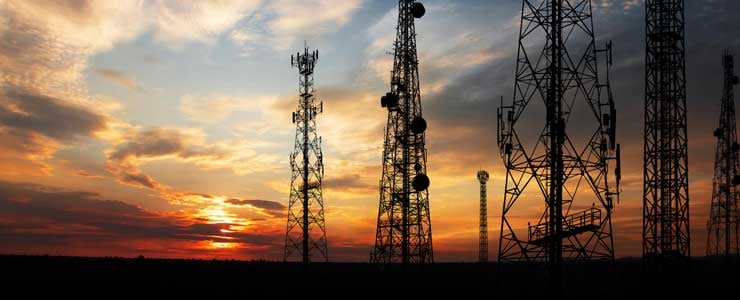
What is 2G?
The second generation of wireless telecommunications networks. Find out what the future holds for 2G, and how these legacy 2G networks compare to...

The second generation of wireless telecommunications networks. Find out what the future holds for 2G, and how these legacy 2G networks compare to...

3G was the third generation of mobile technology, and opened the door to data-intensive applications in a range of industries.

4G is the fourth generation of mobile telecommunications technology, and it opened the doors to a number of solutions, including IoT focussed...

5G Non-Stand Alone (NSA) and 5G Standalone describe the two types of architecture for fifth generation (5G) networks.

Anomaly detection in IoT uses AI to identify unusual device behaviour in real time to spot threats and prevent cyberattack.

An Access Point Name is a name for a link and point of entry between a mobile network and either the public internet or private network.

LTE Category 1 (CAT-1) is a medium speed wireless communication standard specifically designed for Internet of Things (IoT) and Machine to Machine...

Edge computing seeks to place data processing capabilities as close as possible to the exact point they are needed.

Meet the eIM - the intelligence behind SGP.32 eSIM. Discover how it orchestrates secure, global IoT connectivity without physical SIM swaps.

A bootstrap profile provides an eSIM with its default credentials for connecting to a mobile network so that it can enable a connection for devices.

Discover how the eSO simplifies eSIM management - bringing clarity, control and automation to complex IoT connectivity operations at scale.

Embedded UICC (eUICC) is a specific type of UICC that enables a single SIM to host multiple profiles.

A fixed IP SIM card has its own unique IP address, so when a device with a fixed IP SIM connects to a network, its address stays the same.

General Packet Radio Service (GPRS) is an evolved second-generation cellular network protocol.

GSM (Global System for Mobile Communication) refers to the technology behind 2G networks.

Home Location Register (HLR) is a database for managing subscribers on 2G & 3G networks.

High Speed Downlink Packet Access (HSDPA) boosted what’s possible on the 3G network.

An ICCID is a one-of-a-kind string of 18 to 22 digits that identifies a SIM card.

An IMSI (International Mobile Subscriber Identifier) is a string of digits that forms an important part of a SIM profile. Learn more here.

Industry 4.0 is the fourth industrial revolution, and has given rise to the smart factory.

eDRX and PSM: two features designed to minimise power usage and extend battery life for devices using LPWA technologies such as NB-IoT and LTE-M.

Developed by the GSMA (Global System for Mobile Communications) and the SIMAlliance, IoT SAFE is an interoperable, industry-wide security standard.

Internet Protocol Security (IPsec) is a set of rules designed to ensure secure communication between devices across any public network.

An integrated SIM (iSIM), is when the SIM operating system is incorporated directly onto a device’s permanent computing hardware.

Layer 2 Tunnelling Protocol (L2TP) is a networking protocol used for establishing virtual private network (VPN) connections.

Long Range Wide Area Network is an open networking protocol that enables devices to communicate using Long Range wireless technology.

Long-Term Evolution (LTE) is a 4G wireless broadband standard, designed to make it easier to deploy IoT and M2M devices efficiently.

M2M SIM cards enable devices to perform actions and exchange information without the need for human input.

Discover more about MNOs, the services they offer, how they differ from Mobile Virtual Network Operators (MVNOs), and how these various services can...

The Mobile Station International Subscriber Directory Number (MSISDN) is crucial in ensuring secure connectivity between IoT components.

Multi-SIM technology makes it much easier to achieve constant connectivity and for devices to switch between regional operators.

OpenVPN is one of the most popular methods for securing private networks.

Over-the-air (OTA) describes the ability to download applications, services and configurations across a cellular or wireless network.

A software-defined wide area network is a method of architecture that creates a virtualised network overlay connected to a central one.

Discover how SGP.32 is redefining eSIM for IoT - simpler, smarter and built to power secure, scalable global device connectivity.

SIM cards are essential for a number of industries, including transport and logistics.

SIMs are manufactured in a range of five standardised sizes, these are known as form factors. Find out more...

SSL VPN refers to a VPN that uses a software protocol, Secure Sockets Layer. It allows remote users to securely access corporate networks.

SM-SR securely delivers encrypted operator credentials to a SIM and then remotely manages the SIM thereafter. Learn more here.

Universal Mobile Telecommunications Service (UMTS) refers to a group of radio technologies associated with the 3G cellular networks.

USSD is a GSM (Global System for Mobile Communications) messaging protocol most commonly used for sending short commands and requests, without...